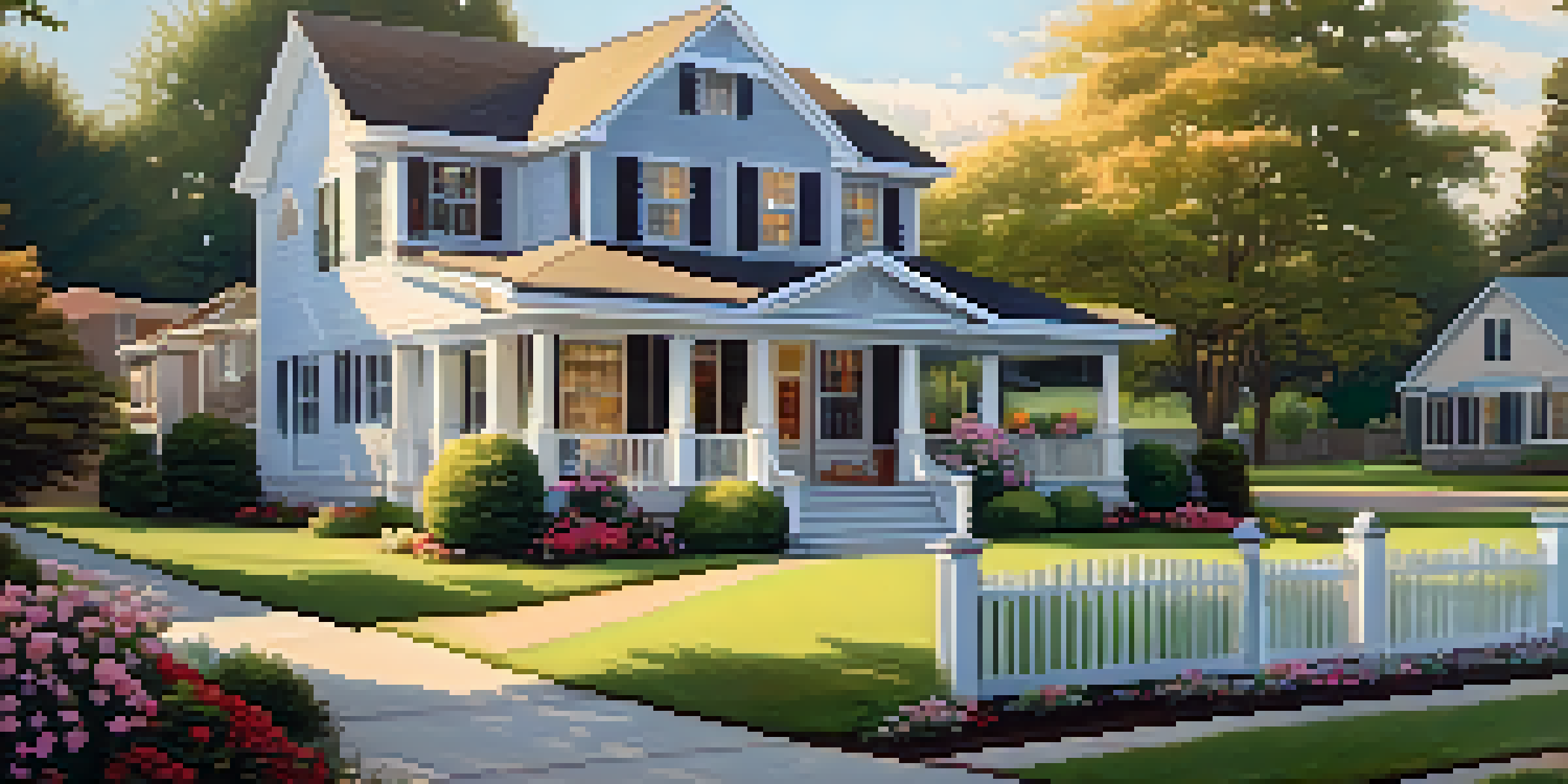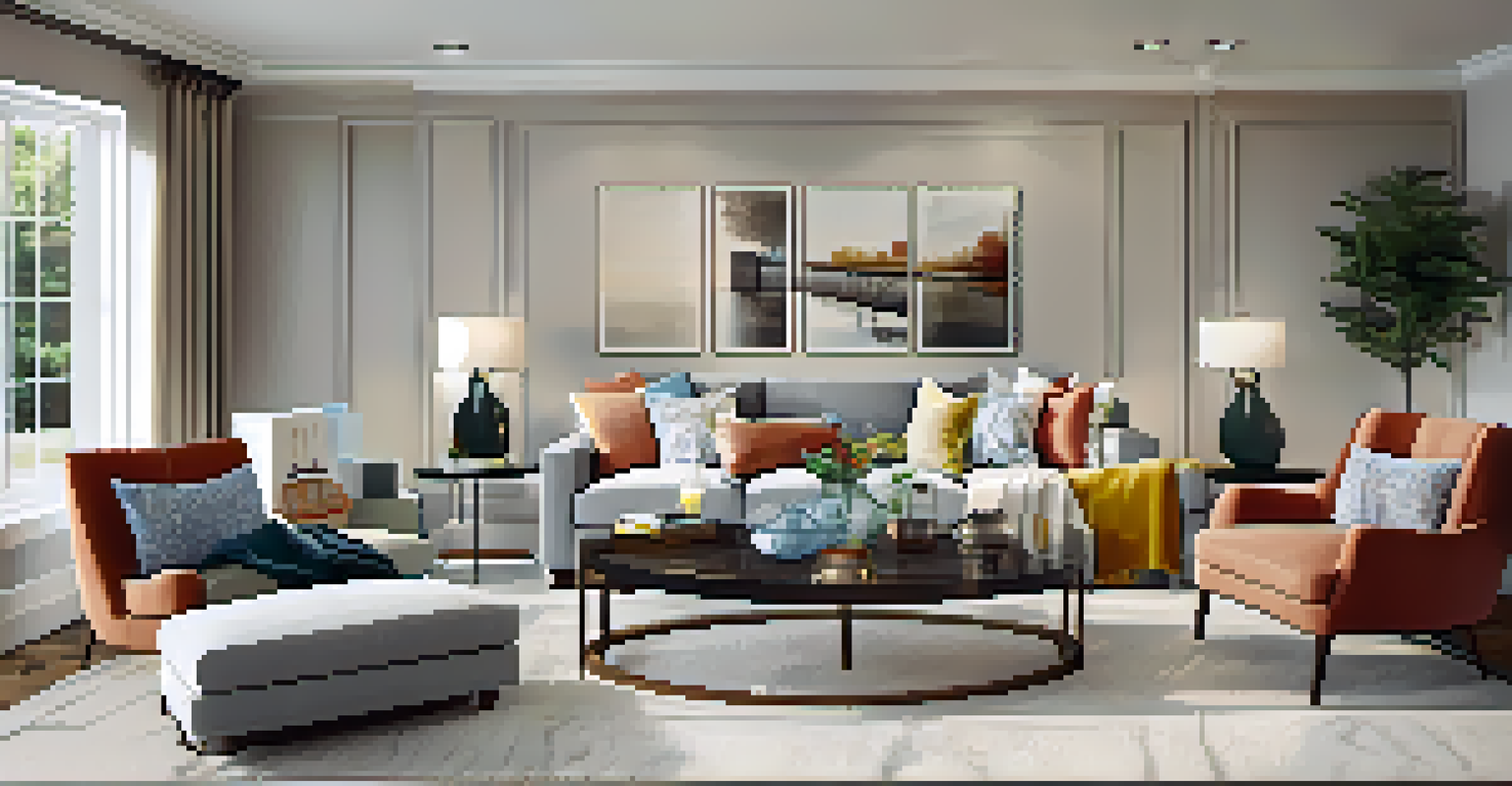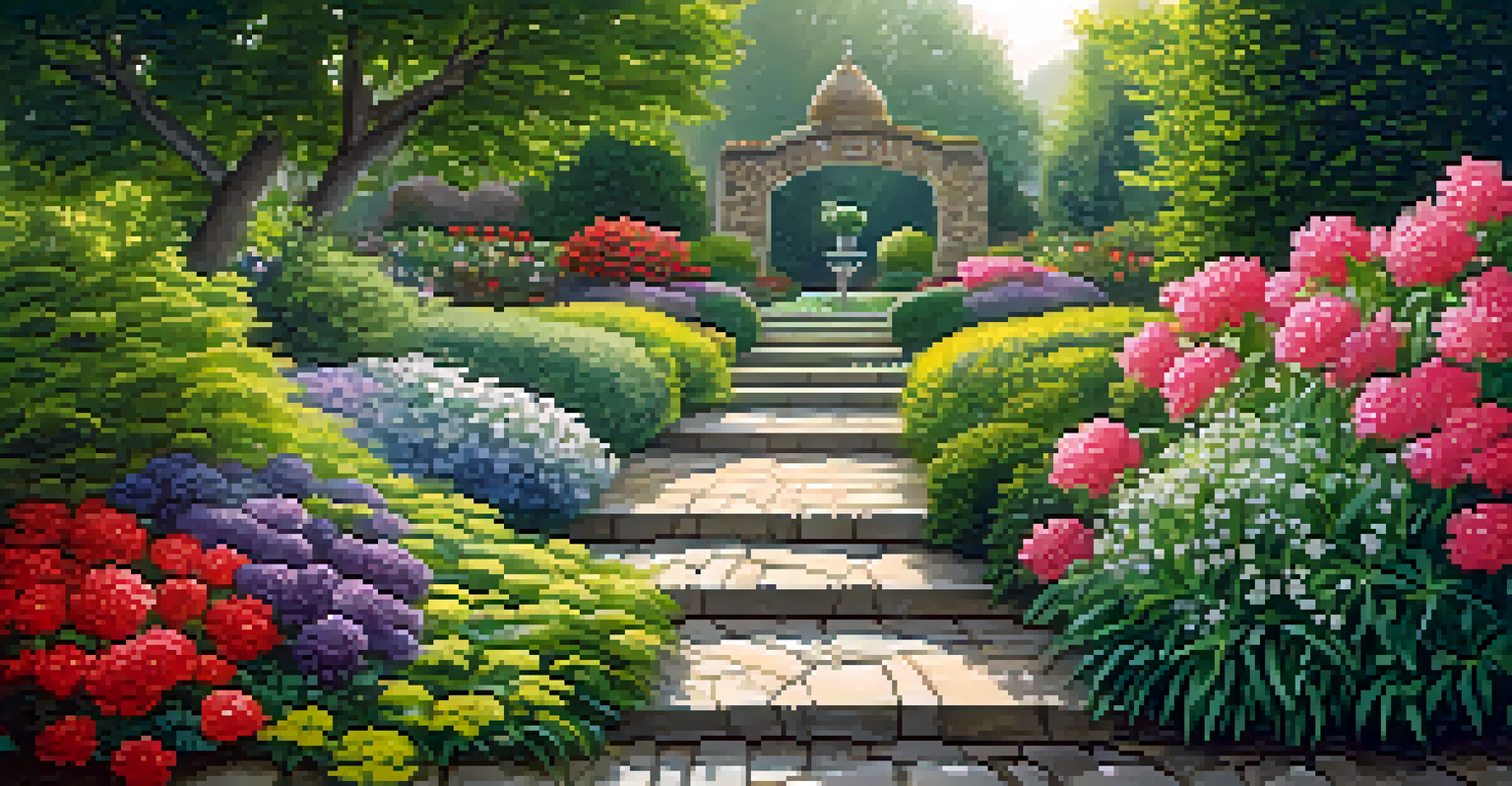The Impact of Visual Appeal on Property Valuation

Understanding Visual Appeal in Real Estate
Visual appeal refers to the aesthetic quality of a property, which plays a crucial role in attracting potential buyers. It encompasses everything from the exterior design to interior decor, making first impressions vital. Properties that look well-maintained and visually pleasing tend to draw more interest, often leading to higher valuations.
You never get a second chance to make a first impression.
Think of visual appeal as the cover of a book; it’s the first thing people notice and can spark their interest. A charming facade or a well-staged living room can evoke emotional responses that lead to quicker sales. Just like a well-designed advertisement, properties that are easy on the eyes can make a lasting impact.
Ultimately, visual appeal sets the tone for the entire buying experience. Buyers often envision themselves in the space, and an inviting atmosphere can make them more willing to pay a premium. Thus, understanding how visual elements affect perceptions is essential for sellers and real estate professionals alike.
The Role of Curb Appeal in Property Value
Curb appeal is the first impression a property makes from the street, and it can significantly impact its market value. A neatly manicured lawn, fresh paint, and attractive landscaping can create a welcoming atmosphere that attracts buyers. Conversely, a neglected exterior can deter interest and reduce perceived value.

Imagine walking up to a home with peeling paint and overgrown weeds; it’s likely to evoke negative feelings before you even step inside. Buyers may assume that if the outside is unkempt, the inside might be too. This perception can drastically lower the price they're willing to offer.
Visual Appeal Boosts Buyer Interest
A property's aesthetic qualities significantly attract potential buyers, leading to quicker sales and higher valuations.
Investing in curb appeal can yield substantial returns. Simple enhancements like power washing driveways or adding colorful plants can make a big difference. In many cases, homes with high curb appeal sell for tens of thousands more than their less attractive counterparts.
Interior Design's Effect on Property Valuation
The interior design of a property plays a crucial role in its overall valuation. Well-designed spaces that are both functional and aesthetically pleasing can elevate a property's market appeal. Features like open floor plans, modern finishes, and ample natural light can make a home feel more inviting and valuable.
Design is not just what it looks like and feels like. Design is how it works.
Picture walking into a home with a bright, airy living room versus one filled with dark, cramped spaces. The former instantly feels more appealing, leading to a more favorable impression. Buyers are often willing to pay more for homes that provide a sense of comfort and style.
Moreover, trends in interior design can affect property values as well. Homes that align with current design trends are more likely to attract buyers, as they resonate with their desires. Keeping your property updated with modern touches can significantly enhance its valuation.
The Psychological Impact of Visual Elements
Visual elements in a property can trigger emotional responses that influence buyer decisions. Colors, textures, and layouts can evoke feelings of happiness, safety, or even nostalgia. Understanding these psychological effects can help sellers strategically present their homes to maximize appeal.
For example, warm colors like yellows and oranges can create a sense of energy and happiness, while cool blues and greens promote calmness. A well-thought-out color scheme can resonate with buyers on an emotional level, making them more likely to envision themselves living there.
Curb Appeal Enhances Market Value
First impressions from a property's exterior can greatly influence perceived value and buyer interest.
This emotional connection often translates into higher offers and quicker sales. Properties that make buyers feel 'at home' are more likely to command higher prices. Therefore, leveraging psychology through visual appeal can be a powerful tool in real estate.
Staging: A Key Strategy for Maximizing Appeal
Home staging is the practice of preparing a property for sale, showcasing its best features while minimizing flaws. Effective staging can enhance visual appeal, allowing potential buyers to see the full potential of a space. It often involves rearranging furniture, decluttering, and adding decor to create an inviting atmosphere.
Imagine a vacant home versus one that’s beautifully staged; the difference is striking. Staging helps buyers visualize how they might use the space, making it easier for them to connect emotionally. This emotional connection can lead to quicker decisions and higher offers.
Additionally, staged homes often appear in listings with professional photographs, further increasing their visibility. Homes that stand out online are more likely to attract showings, ultimately driving competition and elevating property values.
The Importance of Professional Photography
In today's digital age, high-quality photography is essential for showcasing a property's visual appeal. Professional photos capture the best angles and lighting, making spaces look more inviting and spacious. Listings with stunning images often receive more views, increasing the chances of a sale.
Consider the difference between a listing with grainy, poorly lit photos and one featuring bright, well-composed images. The latter is likely to draw more interest and convey a sense of quality. High-resolution images can highlight unique features and details that might otherwise go unnoticed.
Staging Maximizes Property Potential
Effective home staging allows buyers to envision themselves in the space, often resulting in quicker decisions and higher offers.
Moreover, great photography can create an emotional connection with potential buyers before they even step inside. When buyers see a property that looks beautiful online, they are more inclined to schedule a showing, ultimately enhancing the property's market value.
Real Estate Trends: Visual Appeal and Market Demand
Real estate trends can shift over time, and visual appeal often aligns with changing buyer preferences. Understanding these trends is critical for sellers aiming to maximize their property’s value. For instance, open-concept designs and eco-friendly features have become increasingly popular, impacting how properties are valued.
As buyers become more discerning, properties that reflect current trends in design and functionality are more likely to attract attention. A home that embraces modern aesthetics and sustainable features not only stands out but also commands a higher price. Keeping an eye on market trends can help sellers make informed decisions about renovations or updates.

Incorporating trendy visual elements can significantly improve a property's appeal and valuation. Sellers who adapt to these trends are often rewarded with quicker sales and better offers, demonstrating the powerful interplay between visual appeal and market demand.
Conclusion: Investing in Visual Appeal for Value
In conclusion, visual appeal is a powerful factor in property valuation that should not be underestimated. From curb appeal to professional staging, the way a property looks can significantly influence buyer perceptions and willingness to pay. Investing time and resources into enhancing visual elements can yield substantial returns.
By understanding the psychology behind visual appeal and staying updated on design trends, sellers can create spaces that resonate with buyers. Every detail counts, from the exterior facade to the interior decor, and a cohesive design can make all the difference.
Ultimately, properties that prioritize visual appeal not only attract more buyers but also command higher prices. Whether you're a seller or a real estate professional, recognizing the impact of visual elements is key to unlocking a property's full potential.